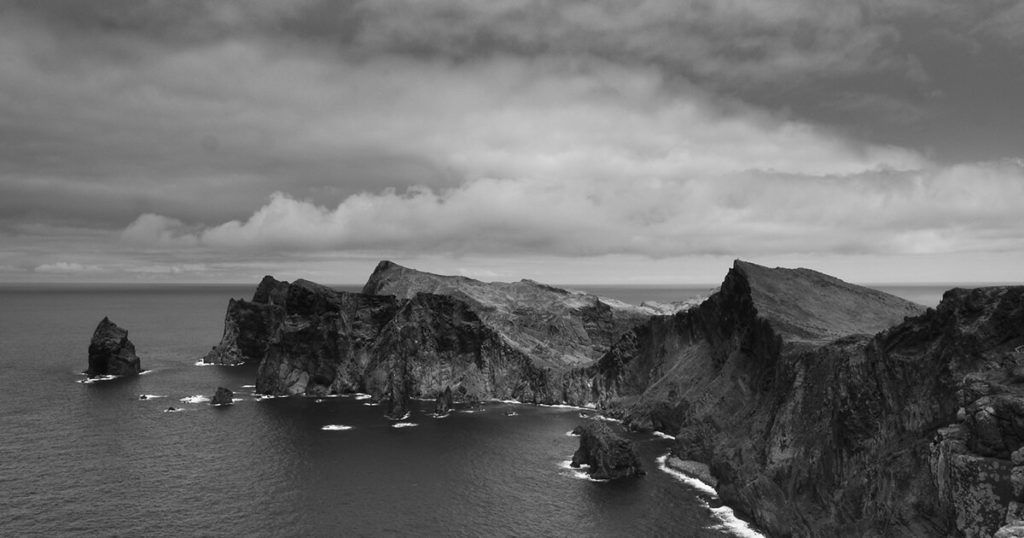
The senda del Cervigón is the name of the stone-paved walk along the coast between Gijón’s San Lorenzo beach and La Ñora beach, 10 kilometers away. Much of the walk is across bluffs above the water, and at several spots you can step off the path for a spectacular view of the sea below. Even without stepping aside to peer over the edge, though, the views are fine, ocean to one side, grassy slopes to the other, some patches of pine and eucalyptus, and sometimes, where the jagged coastline allows a look across a cove, the rocky profile of a cliff, sculpted by wind, water, and time.
Along the path, particularly before it rises away from Gijón, are several manmade sculptures. What need for these, you might think, when the landscape gives you so much to contemplate? Nonetheless, there they are, and among them a collection of nine large blocks of marble, each with either three or four shallow marble bowls arranged on it. Canto de los días huidos, Song of Fleeing Days, is the title of the work. What does it mean, you might ask of the title, or of the blocks themselves, or of the spot.
One fine day in January, I was out with my running partner, approaching Gijón on a residential street parallel to the walk. We topped a rise and suddenly, there below us, was the city—housetops at our feet, the seaside park beyond, the waterfront promenade above the rocky shore, the tawny curve of beach in the distance, and the tall buildings of the city center flanking it. I’d seen it all before from various vantage points, but the city that day looked especially picturesque, the elements arranged like offerings on a platter.
Thirty meters farther and we had to choose. “Which way?” I asked—to the right and onto the coastal path or left down a narrow road and back to the highway. Both descended to the city. My partner swung left. “This way,” he said. The other way was too dangerous.
Dangerous? How many times had we run along the path? How many other runners had? How many children, dogs, tricycles, doddering elders, couples holding hands, tourists, and locals navigate the path every day?
It is true though that accidents happened. I once watched a rescue unit recover two dogs, only one still alive, who’d gotten into a brawl and tumbled together over the edge. Another time a man tripped on a paving stone and fell on the path, badly cutting his leg and shoulder. But the latest, my running partner told me, was a man who just two days before had stepped too close to the brink and fallen seven meters, landing on a ledge, halfway to the rocks and water below. It was the middle of the night and he was alone and had no way to call for help, so he’d spent the rest of the night and the whole next morning there, until he was eventually spotted. He had a broken arm and pelvis, and was suffering mild hypothermia. It took a helicopter to get him safely to a waiting ambulance.
What, I wondered, was he doing looking over the cliff at midnight? My running partner and I shared wild surmises, but the man’s vague explanation to the police as reported in the news was both the strangest and the most obvious—something caught his attention, and he stepped closer. Isn’t that how it so often is—we don’t even know what the thing is that draws us off our path. In fact, unless we fall, we often hardly register that we’ve strayed.
Not all falls, suggested my running partner, are accidental.
Not all falls that aren’t exactly accidental are planned, I said, thinking of the things people allow to happen that they don’t set out to do. Usually of little consequence, they sometimes feel momentous, like the view that day of the sparkling city, like the spot the man had fallen from, like the marble blocks, or the vistas seen while safely perched on one, or what you might see, or might miss, if you venture just a tiny bit farther than is prudent.

